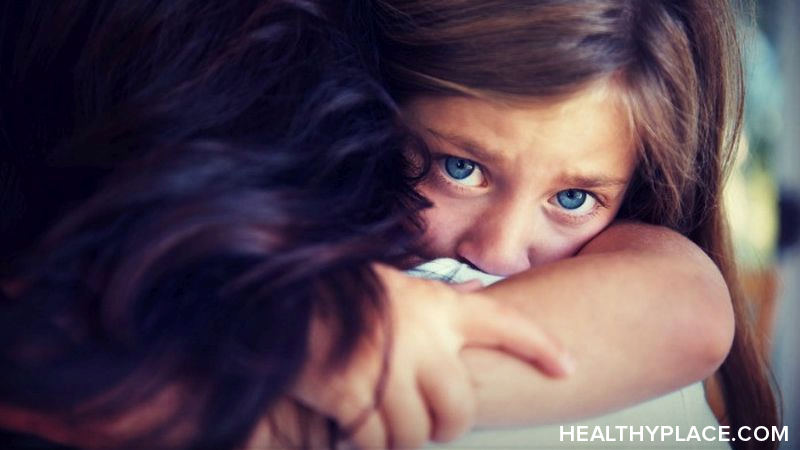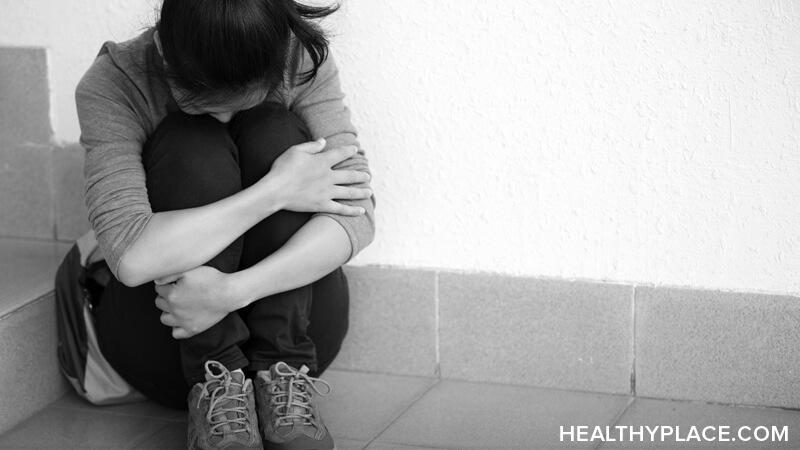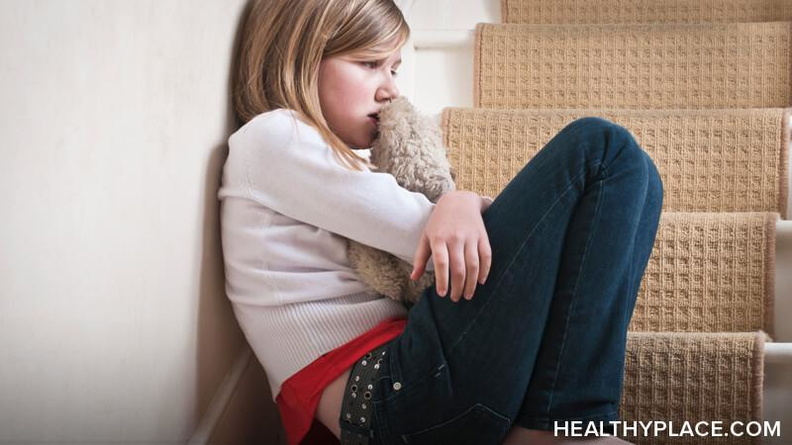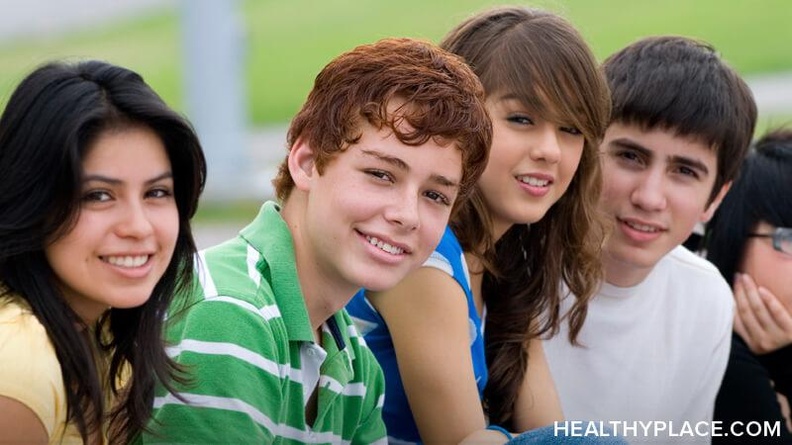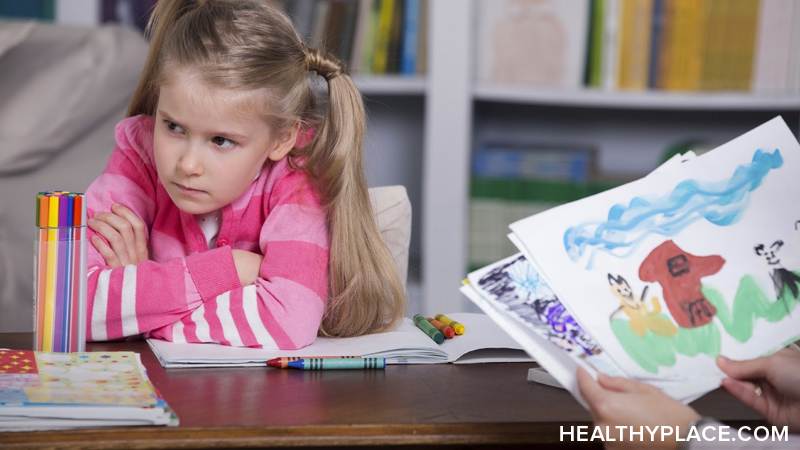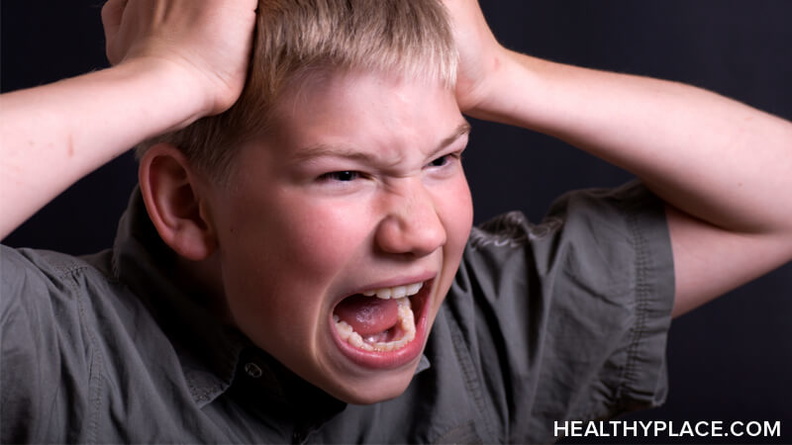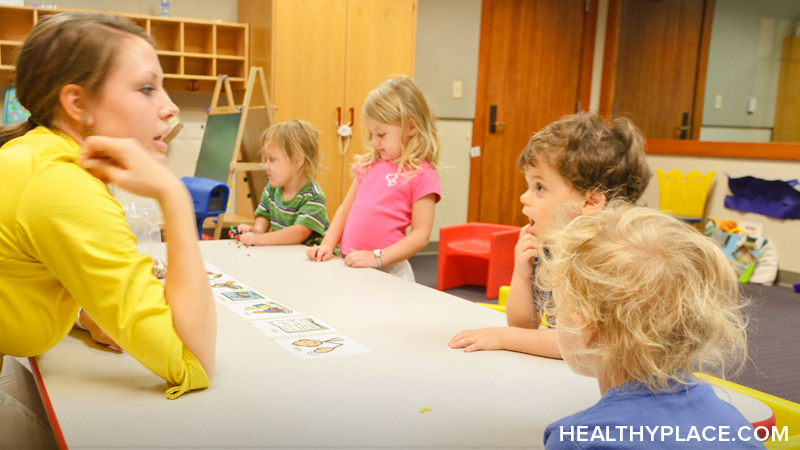Youth Violence Prevention
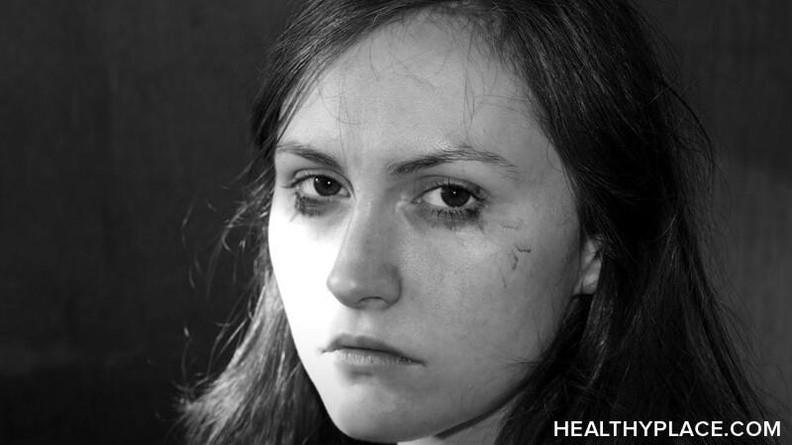
The latest research on youth violence; causes, risk factors, and how parents can foster resilience and self-esteem in children.
- Foreword
- Introduction
- The Facts
- Pathways to Violence: What Do We Know?
- Promoting Healthy, Nonviolent Children: What Works and What Doesn't?
- What Parents Can Do
Foreword
We all have a stake in reducing and preventing youth violence and in promoting the healthy development of the Nation's children and young people. Over the past years, when school shootings made headlines in communities, that imperative became even greater. Local communities recognized that no community is immune from the threat of youth violence. They also recognized that every community has the capacity to do something about it — beginning with families, schools, and other caring adults.
This same imperative led to a report by the U.S. Surgeon General on the topic of youth violence. The report concluded that the tools to reduce and prevent youth violence are known and available — they simply have not yet been used to their best and most productive end. With that recognition, Congress established a program — and the funds to support it — to improve mental health services for children with emotional and behavioral disorders who are at risk for violent behavior. Through those dollars, the U.S. Department of Health and Human Services (HHS) — working in collaboration with the Departments of Justice and Education — created the Safe Schools/Healthy Students Program to help improve the capacity of schools and communities to reduce the potential for youth violence and to improve school and community-based drug abuse prevention and mental health promotion efforts as well.
The Substance Abuse and Mental Health Services Administration's Center for Mental Health Services has taken the lead for HHS in this and other youth violence-related initiatives. One of the most critical activities has been the dissemination of evidence-based programs and knowledge about preventing youth violence. This volume, What you Need to Know about Youth Violence Prevention: An Evidence-Based Guide, takes a first, important step in that knowledge dissemination effort. Built for communities, schools and families, the guide highlights the findings and conclusions of the Surgeon General's Report, as well as data from other research to provide a quick introduction to what is known today about the roots of youth violence and how it can be prevented. It can help concerned communities identify evidence-based programs to adopt and adapt to local needs, and it can serve as a reminder to all Americans that, through action and attention, they can do something to help stem youth violence.
Charles G. Curie, M.A.,
A.C.S.W.
Administrator
Substance Abuse and Mental Health Services Administration
Gail Hutchings, M.P.A.
Acting Director
Center for Mental Health Services
Substance Abuse and Mental Health Services Administration
Introduction
In response to a sudden series of high-profile school shootings, schools and communities across the United States have implemented hundreds of violence prevention programs. Which programs really work? How can we tell? Are any of these programs doing more harm than good?
This guide, based on the state-of-the-science Youth Violence: A Report of the Surgeon General, released in January 2001, and other selected research-informed sources, summarizes the latest knowledge on youth violence. It describes both risk factors that may lead to violence and protective factors that may both prevent it and promote healthy childhood development. It describes evidence-based programs that help prevent youth violence and presents the Surgeon General's vision — suggested courses of action — for youth violence prevention in the future. Publications and organizations that can provide additional information are listed.
Although more research and evaluation of existing youth violence prevention programs are needed, many programs can be implemented now. With the information already available, schools and communities can consider (and perhaps reconsider) their prevention strategies in light of the most current and reliable research findings. This guide can help meet the challenge of directing resources toward effective strategies and programs, disseminating scientifically validated studies, and providing resources and incentives for the implementation and evaluation of programs that are promising.
The Facts on Youth Violence
- The youth violence epidemic of the early 1990s is not over. Confidential self-reports show that the numbers of young people involved in some violent behaviors remain at epidemic levels.
- Most children with mental and behavioral disorders do not become violent as adolescents.
- Most children who are abused or neglected will not become violent.
- Most self-report data show that race and ethnicity have little bearing on a young person's participation in nonfatal violent behavior.
- Juvenile offenders tried in adult criminal courts and incarcerated in prisons are more likely to commit felonies after release than young people who remain in the juvenile justice system.
- A number of prevention and early intervention programs that meet very high scientific standards of effectiveness have been identified.
- Weapons-related injuries in schools have not increased dramatically in the last 5 years. Compared to neighborhoods and homes, schools nationwide are relatively safe places for young people.
- Most young people involved in violent behavior will never be arrested for a violent crime.
Pathways to Violence: What Do We Know?
The most important conclusion of the U.S. Surgeon General's report is that youth violence is a solvable problem.
- What does the research tell us about youth violence?
- What are the major trends in youth violence?
- When does youth violence begin?
- Why do young people become violent?
- What risk factors are correlated with youth violence?
- Can other factors lead to youth violence?
- What factors protect against youth violence?
- What role do culture, ethnicity, and race play in youth violence?
- How does media violence affect youth violence?
What Does the Research Tell Us About Youth Violence?
- The U.S. Surgeon General's report states that the greatest need is for the Nation to "confront the problem of youth violence systematically, using research-based approaches, and to correct damaging myths and stereotypes."
- The search for solutions to the issue of youth violence is challenging. Research conducted for the U.S. Surgeon General's report using extremely high scientific standards found that nearly half of the most rigorously evaluated prevention strategies did not achieve their intended outcomes. Perhaps these programs did not work because of a flawed program strategy—or because of poor program implementation or a poor match between program and target population. The research also found that a few strategies actually were harmful to participants.
- Many effective prevention and intervention programs are now in place, however. We have the tools and the understanding now to reduce, or even prevent, much of the most serious youth violence. We also have the tools to reduce less dangerous (but still serious) problem behaviors and to promote healthy development among young people.
WHAT ARE THE MAJOR TRENDS IN YOUTH VIOLENCE?
- The Surgeon General's report states that between 1983 and 1993, deadly violence involving guns rose to epidemic proportions. At the same time, the number of young people involved in other forms of serious violence rose slightly.
- Since 1994, however, gun use and homicide arrests have dropped, and nonfatal serious violence has gone down. By 1999, arrest rates for violent crimes other than aggravated assault had dropped below 1983 levels, but arrest rates for aggravated assault remained almost 70 percent higher than in 1983.
- Despite the current decline in gun use and lethal violence, the proportion of young people who report their involvement in nonfatal violence remains as high as in the peak years of the epidemic, as does the proportion of students injured with a weapon at school. The number of young people involved in gangs remains near the peak levels of 1996.
- Young men—especially those from minority groups—are arrested disproportionately for violent crimes. But self-reports show that differences in violent behavior between minority and majority groups and between sexes may not be as great as arrest records indicate. Race or ethnicity by itself does not predict whether a child or adolescent is likely to engage in violence.
- Schools around the country are relatively safe compared to homes and neighborhoods. Young people at greatest risk of being killed in school violence are from a racial or ethnic minority, senior high schools, and urban school districts.
WHEN DOES YOUTH VIOLENCE BEGIN?
Scientists have described two patterns for engagement in violence: early onset and late onset. These patterns help to predict the likely course, severity, and duration of violent behaviors over a person's lifespan. In the early onset pattern, violence begins before adolescence; in the late onset pattern, violent behavior begins during adolescence. According to the Surgeon General's report:
- Most children with behavioral disorders do not become serious violent offenders.
- Most highly aggressive children do not become serious violent offenders.
- Most youth violence begins in adolescence but doesn't continue into adulthood.
- Young people who become violent before age 13 usually commit more crimes, and more serious crimes, for a longer time. Their pattern of violence rises through childhood and sometimes continues into adulthood.
WHY DO YOUNG PEOPLE BECOME VIOLENT?
Research on youth violence has identified certain personal characteristics and environmental conditions that place children and youth at risk for engaging in violent behavior or that seem to protect them from that risk. These characteristics and conditions — risk and protective factors, respectively — exist not only within individuals but also in every social setting in which they find themselves: family, school, peer group, and community.
Risk factors can identify vulnerable populations that may benefit from intervention efforts but not particular individuals who may become violent. No single risk factor or combination of factors can predict violence with certainty. Similarly, protective factors cannot guarantee that a child exposed to risk will not become violent.
More research is necessary to identify risk and protective factors, to determine when in a person's development these factors come into play, and to discover why violence starts, continues, or stops in childhood and adolescence. However, research to date offers a solid basis for implementing programs aimed at reducing risk factors and promoting protective factors — and thereby preventing violence.
WHAT RISK FACTORS ARE CORRELATED WITH YOUTH VIOLENCE?
Risk factors for violence are different for youth with the early onset pattern compared to those with the late onset pattern. The most powerful risk factors for children ages 6 to 11 who commit violence at ages 15 to18 are involvement in serious (but not necessarily violent) criminal acts and substance abuse. Table 1 identifies these and other known childhood risk factors. The factors are ranked by the strength of their influence, as determined by statistical research undertaken for the U.S. Surgeon General's report.
| TABLE 1 Early Risk Factors for Those Who Commit Violence at Ages 15-18 |
|
| Strongest factors |
|
| Moderate factors |
|
| Additional factors shown to play a limited role |
|
| Source: Youth Violence: A Report of the Surgeon General, p. 60. | |
Mid- to late adolescence is a period of significant developmental change and a time during which peer influences outweigh family influence. The strongest risk factors for adolescents ages 12 to 14 who commit violence at ages 15 to 18 are identified in Table 2.
| TABLE 2 Late Risk Factors for Those Who Commit Violence at Ages 15-18 |
|
| Strongest factors |
|
| Additional factors shown to play a limited role |
|
| Source: Youth Violence: A Report of the Surgeon General, p. 60. | |
An accumulation of risk factors is more important in predicting violent behaviors than is the presence of any single factor. The more risk factors a child or young person is exposed to, the greater the likelihood that he or she will become violent.
CAN OTHER FACTORS LEAD TO YOUTH VIOLENCE?
Some situations and conditions can influence the likelihood of violence or the form it takes. Situational factors - such as provoking, taunting, and demeaning interactions - can spark unplanned violence. The presence of a gun in certain situations can raise the level of violence.
The Surgeon General's Report found only limited evidence indicating a relationship between serious mental disorders and violence in adolescents or young adults in the general population, but young people with serious mental disorders who also abuse substances or have not received treatment may be at risk for violence.
WHAT FACTORS PROTECT AGAINST YOUTH VIOLENCE?
Protective factors - the personal characteristics and environmental conditions that help protect against a specific risk - provide some explanation as to why children and adolescents who face the same degree of risk may behave differently.
The research evidence about factors that protect against youth violence is not as extensive as is the research on risk factors, and the research must be considered preliminary. Although a number of protective factors have been proposed, only two have been found to moderate the risk of violence: an intolerant attitude toward deviance, including violence, and commitment to school. These factors reflect a commitment to traditional values. Both effects are small.
WHAT ROLE DO CULTURE, ETHNICITY, AND RACE PLAY IN YOUTH VIOLENCE?
Considered apart from other life circumstances, race and ethnicity have not been shown to be risk factors for youth violence.
- The evidence suggests that the link between race and violence is based largely on social and political differences rather than on biological differences. Ethnicity may account for limited opportunities due to prejudice, and ethnic minority families may face acculturation stresses. On the other hand, some features of ethnic cultures may serve as protective factors (Surgeon General, 2001; APA 1993).
- Prevention specialists generally presume that risk factors for youth violence identified in studies with primarily White participants are relevant also for such culturally diverse groups as African Americans, Hispanics, Asian Americans and Pacific Islanders, and Native Americans. Research on the roles that race, ethnicity, and culture may play among young people of specific minority groups is needed to shed light on the risk and protective factors that affect those groups.
HOW DOES MEDIA VIOLENCE AFFECT YOUTH VIOLENCE?
In the context of the ongoing debate on the effect of media violence on children and youth, the U.S. Surgeon General's report summarizes major research findings from the small body of research on the topic:
- Exposure to media violence can increase children's aggressive behavior in the short term. Media violence increases aggressive attitudes and emotions, which theoretically are linked to aggressive and violent behavior. Evidence for long-term effects of media violence is inconsistent.
- Violent behaviors occur infrequently and are subject to multiple influences. Existing evidence is insufficient to describe accurately how much exposure to media violence—of what types, for how long, at what ages, for what types of children, or in what types of home settings—will predict violent behavior in adolescents and adults.
Families play a critical role in guiding their children's exposure to the media, including television programs, films and videos, and computer and video games. Community groups—such as schools, faith-based organizations, and parent-teacher-student organizations—can teach parents and children how to be more critical consumers of media. In addition, Federal agencies can encourage needed research, share research findings with the public, encourage increased interaction between violence prevention researchers and media researchers, and create networks for sharing solutions to social and public health problems. For a more detailed discussion of the risk factors for youth violence, see Youth Violence: A Report of the Surgeon General, chapter 4.
Promoting Healthy, Nonviolent Children: What Works and What Doesn't?
- Why take the public health and development approaches?
- What are best practices to prevent youth violence?
- How do large-scale prevention programs work best?
- Is prevention cost-effective?
- Violence prevention programs by best practices category
WHY TAKE THE PUBLIC HEALTH AND DEVELOPMENTAL APPROACHES?
- The most common reaction to youth violence has been to "get tough" on violent offenders and to focus on punishment. The public health approach focuses more on the prevention of violence than on punishment or rehabilitation.
- The public health model looks at factors that put young people "at risk" for violent behavior. Practical, goal-oriented, community-based strategies that address these risks can help reduce injuries and deaths caused by violence—just as the public health approach already has reduced traffic fatalities and deaths attributed to tobacco use.
- Patterns of behavior change over the course of a person's life. A developmental approach permits primary prevention researchers to design violence prevention programs that can be put in place at just the right time to be most effective in the life of a child or young person. Preventive interventions must be developmentally appropriate to be effective.
The U.S. Surgeon General's report suggests the following approaches to address youth violence:
- Prevention and intervention programs must reflect the different patterns of violence typical of early and later onset.
- Early childhood programs that target at-risk children and their families are important to prevent the onset of a chronic violent career.
- Programs must be developed to identify patterns, causes, and prevention strategies for late-onset violence.
- A comprehensive community prevention strategy must address both early- and late-onset patterns and determine their causes and risk factors.
- Serious violence is an element of a lifestyle that includes drugs, guns, early sex, and other risky behaviors. Successful interventions must focus on the risky lifestyle of the young person.
The most highly effective preventive intervention programs combine approaches that address both individual risks and environmental conditions. Building individual skills and competencies, providing parent effectiveness training, improving a school's social climate, and changing young people's type and level of involvement in peer groups, combined, are particularly effective.
WHAT ARE BEST PRACTICES TO PREVENT YOUTH VIOLENCE??
The Surgeon General describes three categories of preventive interventions: primary, secondary, and tertiary.
- Primary preventive interventions are designed for general populations of youth, such as all students in a school. Most of these young people have not yet become involved in violence or encountered specific risk factors for violence.
- Secondary preventive interventions are designed to reduce the risk of violence among young people who display one or more risk factors for violence (high-risk youth).
- Tertiary interventions are designed to prevent further violence or escalation of violence among young people already involved in violent behavior.
The U. S. Surgeon General's report identifies prevention strategies found to be effective and ineffective for specific populations. Table 3 lists those findings.
| TABLE 3 Strategies for Youth Violence Prevention |
|
| Effective Strategies | Ineffective Strategies |
| For General Populations of Young People: Primary Prevention | |
|
|
| For Children at High Risk of Violence: Secondary Prevention | |
|
|
| For Violent or Seriously Delinquent Youth: Tertiary Prevention | |
|
|
HOW DO LARGE-SCALE PREVENTION PROGRAMS WORK BEST?
Limited research shows that the successful implementation of a large-scale program depends as much on effective implementation as it does on the program's content and characteristics. Important factors for success in implementing a national program in a local community are:
- Focus on a distinct problem;
- Appropriate program for the specific target population, participant, and family;
- Staff buy-in to the program;
- Motivated and effective project leadership;
- Effective program director;
- Well-trained and motivated staff;
- Plentiful resources; and
- Implementation of the program with fidelity to its design.
Sometimes cost savings due to prevention and intervention programs are not obvious because of the time lag between the implementation of a program and the appearance of its effects. However, in the United States, where criminal justice focuses on get-tough laws and incarceration for serious violent criminals, hundreds of billions of dollars are spent each year on the criminal justice system, security, and the treatment of victims, or are lost due to lower productivity and quality of life.
Crime prevention, on the other hand, avoids incurring not only the costs of incarceration, but also some short- and long-term costs to victims, including material losses and medical costs. Other benefits may be difficult to quantify, but in addition to reduced medical costs, the indirect benefits of preventing serious or violent offenses include increased worker productivity, increased tax collection, and even reduced welfare costs.
It is important to match the intervention to the target population. This link has a critical effect on both the cost effectiveness and the overall effectiveness of an intervention. For more details about the cost effectiveness of youth violence prevention programs, see Youth Violence: A Report of the Surgeon General, chapter 5.
VIOLENCE PREVENTION PROGRAMS BY BEST PRACTICES CATEGORY
The Surgeon General's report identifies strategies and programs that work, that are promising, and that do not work to prevent youth violence. If a program is not identified in the Surgeon General's report as "model" or "promising," it does not mean it is ineffective. In most cases, it means only that it has not yet been rigorously evaluated or that its evaluation was not complete. The scientific standards that were used in the analysis of programs for the Surgeon General's report are given here.
Model
-
- Rigorous experimental design (experimental or quasi-experimental)
- Significant deterrent effects on:
- Violence or serious delinquency
- Any risk factor for violence with a large effect size (.30 or greater)
- Replication with demonstrated effects
- Sustainability of effects
Promising
- Rigorous experimental design (experimental or quasi-experimental)
- Significant deterrent effects on:
- Violence or serious delinquency
- Any risk factor for violence with an effect size of .10 or greater
- Either replication or sustainability of effects
Does not work
- Rigorous experimental design (experimental or quasi-experimental)
- Significant evidence of null or negative effects on violence or known risk factors for violence
- Replication, with the preponderance of evidence suggesting that the program is ineffective or harmful
Twenty-seven model and promising programs and two programs that do not work are presented in the U.S. Surgeon General's report. Some are school-based and some are community-based. They present a wide variety of approaches for dealing with problems ranging from poor parenting to bullying, drug abuse, and gang involvement. Table 4 lists these programs. Descriptions of the programs are included in the appendix of this pamphlet and in the U.S. Surgeon General's report, pages 133-151.
| TABLE 4 Violence Prevention Programs |
|
| MODEL | |
| Violence Prevention |
|
| Risk Prevention |
|
| PROMISING | |
| Violence Prevention |
|
| PROMISING | |
| Risk Prevention
|
|
| DOES NOT WORK | |
|
|
What Can Parents Do
- How does resilience enhance healthy development?
- What can parents do to foster resilience and healthy development?
We want all our children to develop in healthy ways, both physically and emotionally. It is not enough just to protect our children from taking part in violent behaviors. Research on resilience—the capacity to rebound in the face of adversity—provides us with important information on the strengths that individuals, families, schools, and communities call upon to promote health and healing.
HOW DOES RESILIENCE ENHANCE HEALTHY DEVELOPEMENT?
Davis (1999) discusses important characteristics of resilience. These qualities appear to work as protective factors to help us navigate the curves of life's pathways:
- good health and easy temperament;
- secure attachment to others and basic trust;
- cognitive and emotional intelligence, language acquisition and reading, capacity to plan, self-efficacy, self-understanding, and adequate cognitive appraisal;
- emotional regulation, ability to delay gratification, realistically high self-esteem, creativity, and sense of humor;
- ability and opportunity to contribute; and
- belief that one's own life matters.
WHAT CAN PARENTS DO TO FOSTER RESILIENCE AND HEALTHY DEVELOPMENT?
Many protective factors have been found to promote healthy development and resilience among young people. Collected here from a number of sources (see References and Resources) are some evidence-based steps parents can take to help their children develop with resilience and good mental health:
-
- Give your children love and attention every day.
- Show your children appropriate behaviors by the way you act.
- Listen to and talk with your children-about anything-to develop an open, trusting relationship.
- Reward your child for good behavior or a job well done.
- Establish clear and consistent limits and rules.
- Do not hit your children.
- Know where your children are, what they are doing, and with whom.
- Communicate with teachers and be involved in your children's school.
- Set high expectations for your children.
- Create opportunities for your children to be contributing members of the family and community.
- Know your children well enough to discern the warning signs of unusual behavior.
- Know when to intervene to protect your children.
- Get help if you think you need it.
- Make sure your children do not have access to guns, drugs, or alcohol.
- Teach your children ways to avoid becoming either a victim of violence or a bully.
- Learn ways to avoid conflict in the family; learn about and use anger-control techniques, if necessary.
- Monitor the media to which your children are exposed.
- Encourage your children's understanding of your family's cultural traditions and values.
As part of the Safe Schools/Healthy Students Violence Prevention grant program, CMHS has developed the 15+ Make Time to Listen, Take Time to Talk Campaign. This communications campaign encourages many of the steps listed above, because research has shown that children whose parents are highly involved with them attain higher levels of education and economic self-sufficiency than do children whose parents are not highly involved. Parental involvement with adolescents is also associated with lower levels of delinquency and better psychological well-being. The need to strengthen the role of parents in American families is now identified by the media, national organizations, and Federal agencies as a national priority. For a free brochure, a conversation starter card game, and other helpful information from the 15+ Make Time to Listen, Take Time to Talk campaign, go to http://www.mentalhealth.samhsa.gov or call 800-789-2647.
Disclaimer
This publication was prepared by Irene Saunders Goldstein, with consultative assistance from Jeannette Johnson, Ph.D., for the Center for Mental Health Services, Substance Abuse and Mental Health Services Administration (SAMHSA), U.S. Department of Health and Human Services (HHS) under Contract No. 99M006200OID, Anne Mathews-Younes, Ed.D., Government Project Officer. The content of this publication does not necessarily reflect the views or policies of CHMS, SAMHSA, or HHS.
Sources:
- SAMHSA'S National Mental Health Information Center
APA Reference
Staff, H.
(2022, January 11). Youth Violence Prevention, HealthyPlace. Retrieved
on 2025, November 9 from https://www.healthyplace.com/parenting/anxiety/youth-violence-prevention
